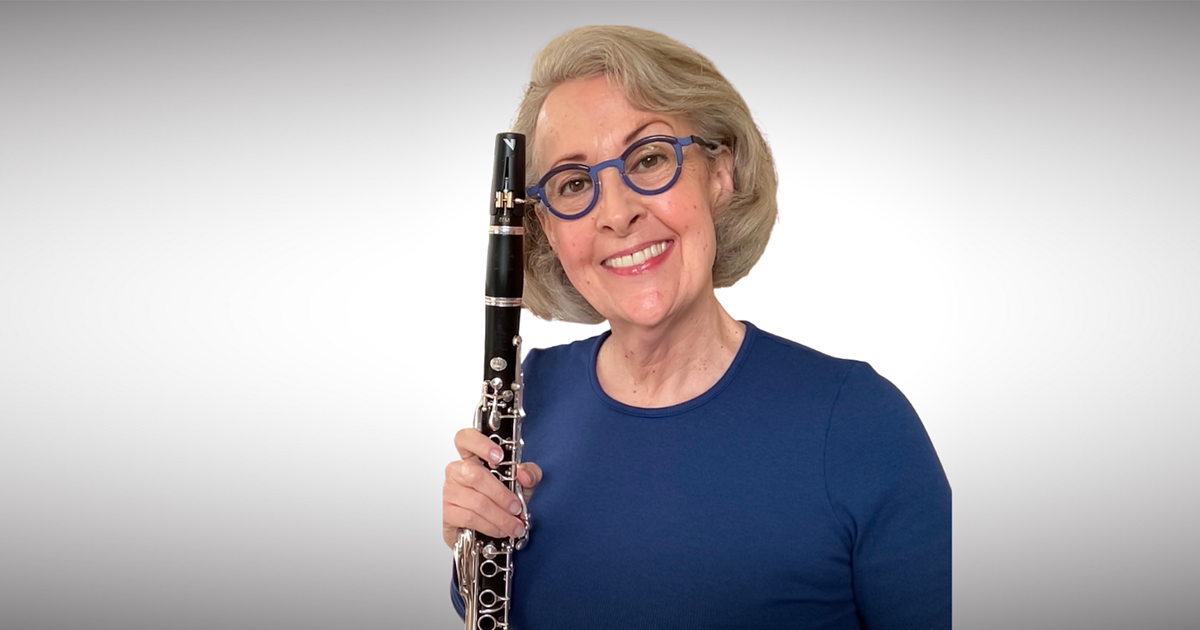Audition Preparation Basics: Beyond the Notes and Rhythms
by Paula Corley
Date Posted: July 27, 2018

What do judges value the most in an audition? This is certainly a debatable topic with many answers; however, most would agree that sound and rhythm are on everyone’s list. It is important to have a beautiful sound throughout the full range of your instrument. A confident, centered and connected sound allows you to perform and not just play. After sound is taken into consideration, the player with the most accurate rhythm usually wins. Good rhythm requires an excellent sense of time and pulse. Performers must establish and maintain an obvious steady pulse, especially when multiple subdivisions are present.
1. Build a connected sound with "air between the notes".
Five Note Exercise
Choose five notes that you can perform easily. Record yourself playing these five notes, slurred, at a moderately slow tempo. Listen to the recording and ask yourself these questions:
- Are the notes connected? Or, is there space and loss of energy at the end of each note?
- Do all notes have a confident, centered and vibrant sound?
Next, expand with more notes until you can successfully connect one octave, then two octaves, and finally your full range.
- Do not use written music. Concentrate on what you hear for this exercise.
- Practice different dynamics, but keep in mind there is a limit to “soft” and to “loud.” Play no louder or softer than you can with a good sound. Remember: record yourself and listen.
- Notice which notes on your instrument respond easily and those that do not.
- Pay attention to your fingers. Make sure your fingers are curved and hover just above the keys. Practice in front of a mirror to assess. Good hand position is an on-going process that requires maintenance with regular pattern practice. It is critical when working for connected notes.
Once you have mastered step-wise patterns, apply this same exercise to simple intervals like those shown below. Remember: there should be no break between the notes or difference in sound quality.

2. Develop effective articulation.
Not all music is connected, so well-controlled, defined articulation is also important. A connected sound (described above in 1) is the foundation for good articulation. Air should be continuous. The tongue interrupts but does not stop the air. Air must be present before the tongue releases it (note starts) or interrupts it (multiple notes). Tongue motion should be minimal and not interfere with the tone quality.
- Tonguing ‘bursts’ can improve articulation consistency, speed, and note starts.
- Concentrate practice in the middle range first.
- Minimize tongue motion by practicing at faster tempos first, then slow down.

3. Develop a good sense of time.
Successful performance of common subdivisions is an absolute necessity. Performing the subdivisions separately with a metronome is a good start, but the real skill lies in establishing and controlling multiple subdivisions within any given tempo. Look at the example below from the Bona studies:

Develop this skill by practicing any scale with this rhythmic pattern:

- Use a metronome.
- Practice a variety of tempos - slow to fast.
- Add different articulation.
- Practice different dynamics.
The most important thing to remember is that successful practice is planned, not random! - Paula Corley
4. Become an educated competitor.
While there is no guarantee of a perfect audition, deliberate practice will maximize your preparation. Find practice techniques that work for you. Identify the skills needed to play the most difficult passages and create practice strategies to strengthen those skills. The most important thing to remember is that successful practice is planned, not random!
Listen to yourself and others. “Sit in” on auditions of other instruments when possible to develop a sense of comparative, subjective judging. Focus on preparation and accept the outcome. If it doesn’t go your way, reflect on how to can refine your preparation for the next time.
Download Article PDF.
Learn about Vandoren JUNO reeds, the only reed specifically designed for students.

About the Author
Paula Corley is the Education Advisor for Buffet Crampon North America. She has 33+ years of teaching experience from middle school to university level. Most recently Paula served as the clarinet instructor at Texas Lutheran University where she hosted ‘clariNETWORKS’ – a very popular annual event for clarinetists of all ages and band directors. She is also a chamber music judge for Music for All's National Chamber Music Festival and served as the Pedagogy Chair for the International Clarinet Association from 2018-2020. Most know her as the ‘mayor’ of Clarinet City, a teaching website for all ages and stages of clarinet playing.
Originally from Mississippi, Paula grew up without access to clarinet lessons which sparked a lifelong interest in research for developing players. She is a graduate of Mississippi State University (BME) where she was named Alumnus of the Year in 2012-13 and Southern Methodist University (MM) where she worked with the legendary Howard Dunn. Paula taught in Plano, Texas ISD for many years before moving to Asheville, NC where she served as principal clarinet in the Asheville Lyric Opera and on the faculty at Mars Hill University (NC).
Author of So You Want to Play the Clarinet and The Break (Southern/Hal Leonard), Paula has performed and presented at music conferences throughout the US since 1998. She is a performing artist and clinician for Vandoren and for Buffet Crampon and her articles have appeared in THE CLARINET, Vandoren WAVE, The Texas Bandmasters Review, and The Instrumentalist. A new series of her arrangements for clarinet can be found at Hal Leonard. She also has two recorded works for clarinet: Unfamiliar Territory by Michael Markowski and Road Trip for clarinet quintet by Clifton Jones. Visit clarinetcity.com.
Subscribe to the We Are Vandoren E-newsletter (WAVE) to receive 4 weekly articles for Performers, Students, and Educators